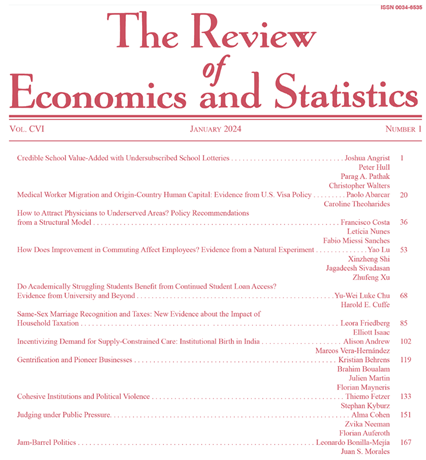Modification of Epidemiological Model for Predicting the Development of a Socially Significant Infection (by the Example of Chronic Viral Hepatitis C)
IF 7.6
1区 经济学
Q1 ECONOMICS
引用次数: 0
Abstract
Purpose of the study: to develop, evaluate the effectiveness and applicability of an epidemiological model for the development of chronic viral hepatitis C, with the ability to predict the number of people who need to be tested for the presence of the virus.Materials and methods. In our study, we used official data for the Republic of Bashkortostan on the spread of chronic viral hepatitis C (annual dynamics of cases) in the period from 2005 to 2020, which were provided at our request by the Republican Clinical Infectious Diseases Hospital. Demographic indicators for births and deaths were taken from the annual statistical report of Bashkortostanstat. The study considered 2 mathematical models: 1) Model SIR considers three groups: susceptible (those who have not yet become infected), infected and dropouts (those who have recovered or died). 2) The STIRD model is the SIR model, improved by the author, which takes into account five population groups: susceptible (those who have not yet become infected), tested (those who have been in contact with the infected people and require a test to clarify the diagnosis), infected, dropouts (those who recovered) and deceased.Results: from 2015 to 2017, the model provided representative data on the forecast of the infected people, the error was about 1.5-4%, but after this period, starting from 2018, the error rate became critical and the model lost its representativeness. To explain this phenomenon, there are 2 reasons: the first is the easy availability of drugs for the treatment of chronic hepatitis C, the second is the need to use Markov models in the model, since the calculation does not take into account the dynamics of changes in the coefficients of the model. As a result of the coronavirus pandemic in 2020, the error was more than 166%, this is due to a decrease in contacts between people and, as a result, a sharp decrease in the incidence of chronic hepatitis C.Conclusion. The complete epidemiological STIRD model proposed by the author (taking into account the demographic change in the structure of the population) has shown itself well in medium-term forecasting up to three years. A significant advantage of this model specification compared to other epidemiological models is the ability to predict the number of diagnostic laboratory tests needed to detect a virus in humans. This is important, since the diagnosis and treatment of chronic hepatitis C is covered from compulsory medical insurance and regional budgets. Epidemiological modeling opens up great opportunities for developing scenarios for combating viral hepatitis C, especially with its chronic form, because, according to WHO, each country has the opportunity to completely get rid of this socially significant infection by 2030.预测社会重大感染发展的流行病学模型修正(以慢性病毒性丙型肝炎为例)
该研究的目的:开发、评估慢性病毒性丙型肝炎发展的流行病学模型的有效性和适用性,并能够预测需要进行病毒检测的人数。材料和方法。在我们的研究中,我们使用了巴什科尔托斯坦共和国2005年至2020年期间关于慢性病毒性丙型肝炎传播(年度病例动态)的官方数据,这些数据是应我们的要求由共和国临床传染病医院提供的。出生和死亡人口指标取自巴什科尔托斯坦州年度统计报告。该研究考虑了2个数学模型:1)SIR模型考虑了三个群体:易感人群(尚未感染的人)、感染者和辍学者(已经康复或死亡的人)。2) STIRD模型是由提交人改进的SIR模型,它考虑了五个人群:易感人群(尚未感染的人)、检测人群(与感染者有过接触并需要检测以明确诊断的人)、感染人群、辍学者(康复者)和死者。结果:2015 - 2017年,模型对感染者的预测提供了代表性数据,误差约为1.5-4%,但在此期间之后,从2018年开始,错误率达到临界,模型失去代表性。要解释这一现象,有2个原因:第一是治疗慢性丙型肝炎的药物很容易获得,第二是需要在模型中使用马尔可夫模型,因为计算没有考虑模型系数变化的动态。由于2020年的冠状病毒大流行,误差超过166%,这是由于人与人之间的接触减少,从而导致慢性丙型肝炎的发病率急剧下降。作者提出的完整的流行病学stid模型(考虑到人口结构的人口变化)在长达三年的中期预测中表现良好。与其他流行病学模型相比,该模型规范的一个显著优点是能够预测检测人体内病毒所需的诊断实验室检测次数。这一点很重要,因为慢性丙型肝炎的诊断和治疗由强制性医疗保险和区域预算支付。流行病学建模为制定抗击病毒性丙型肝炎,特别是慢性丙型肝炎的方案提供了巨大的机会,因为根据世卫组织的说法,每个国家都有机会在2030年之前完全消除这种具有社会意义的感染。
本文章由计算机程序翻译,如有差异,请以英文原文为准。
求助全文
约1分钟内获得全文
求助全文
来源期刊

Review of Economics and Statistics
Multiple-
CiteScore
8.50
自引率
0.00%
发文量
175
期刊介绍:
The Review of Economics and Statistics is a 100-year-old general journal of applied (especially quantitative) economics. Edited at the Harvard Kennedy School, the Review has published some of the most important articles in empirical economics.
 求助内容:
求助内容: 应助结果提醒方式:
应助结果提醒方式:


